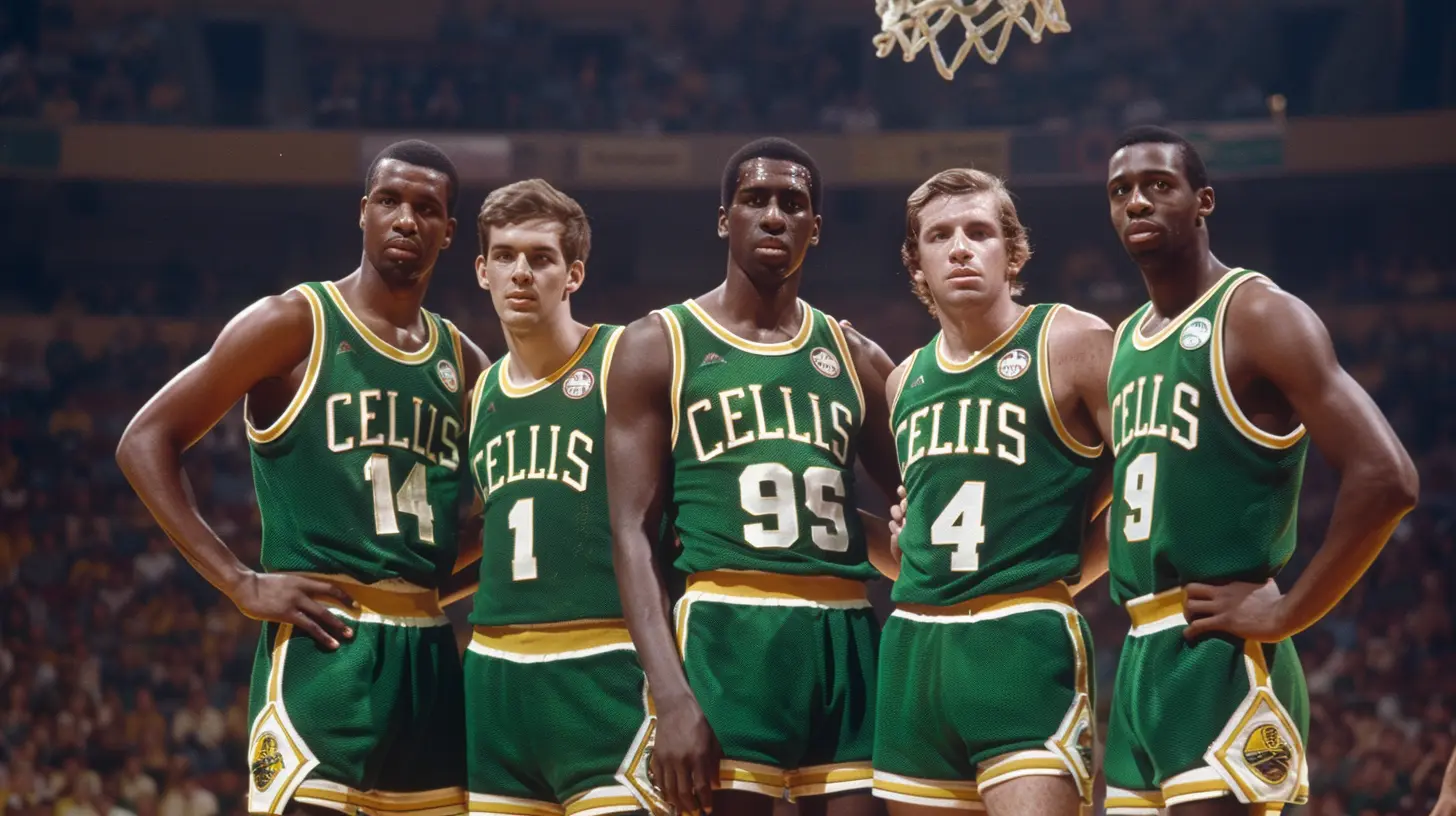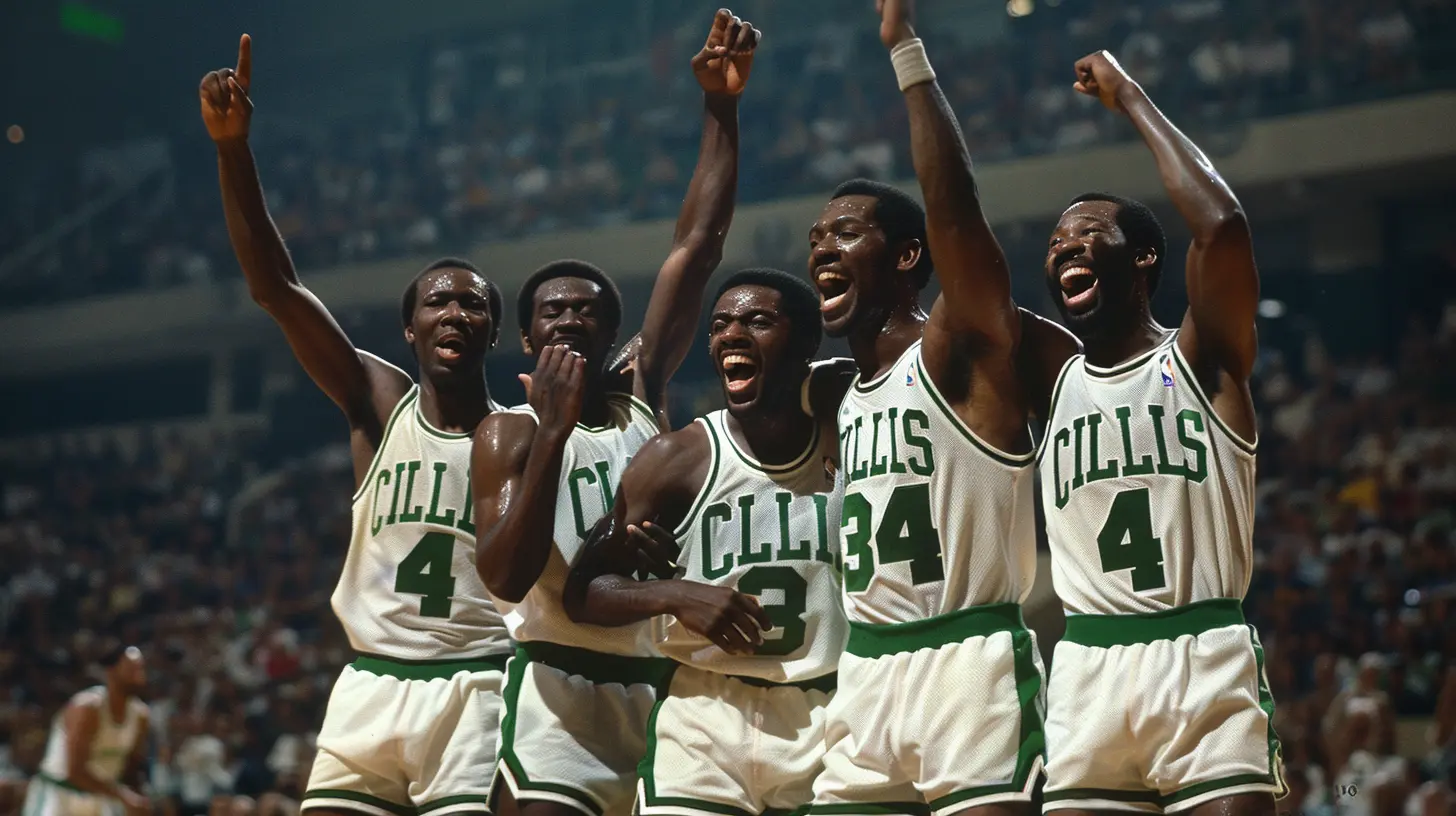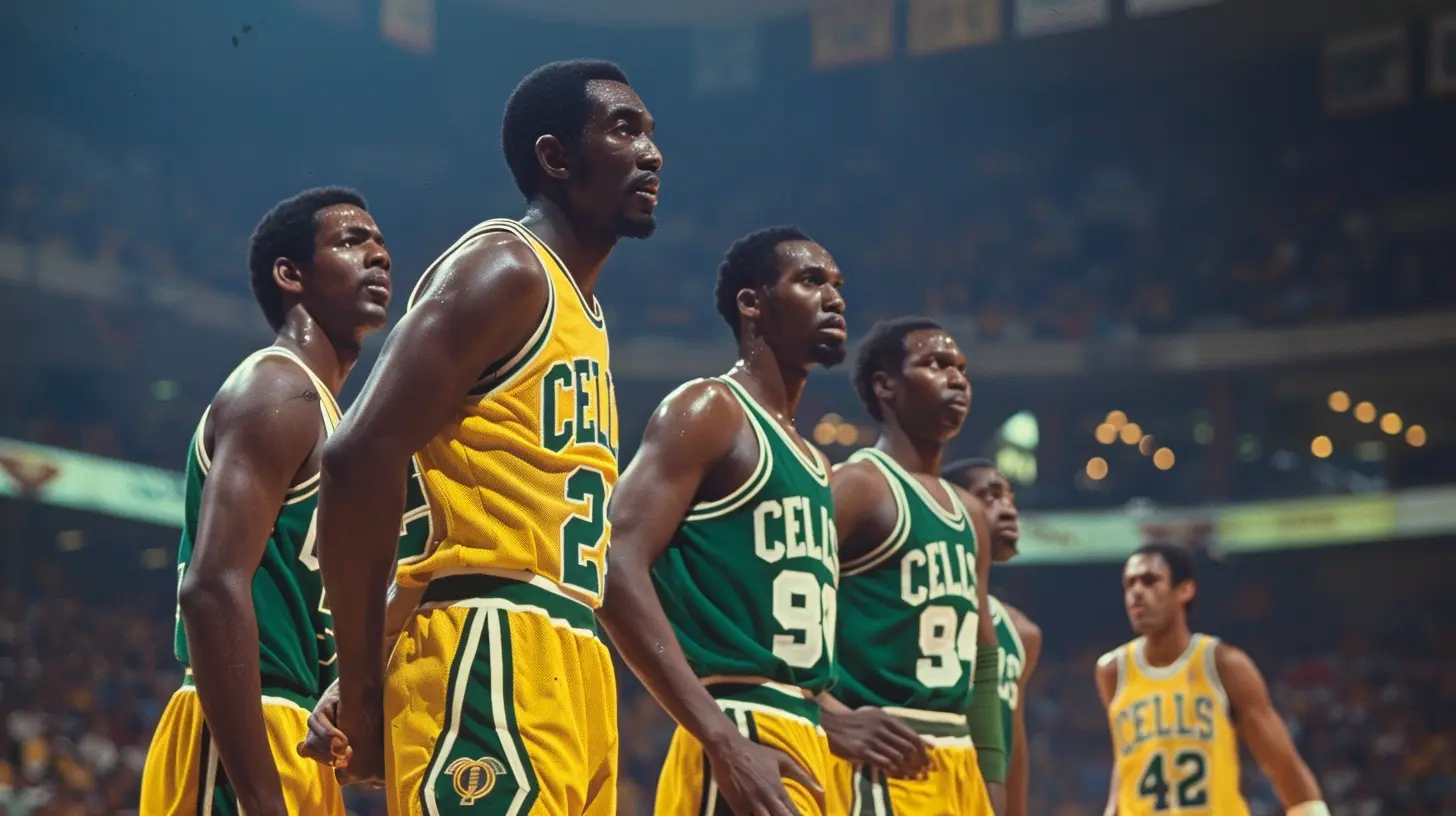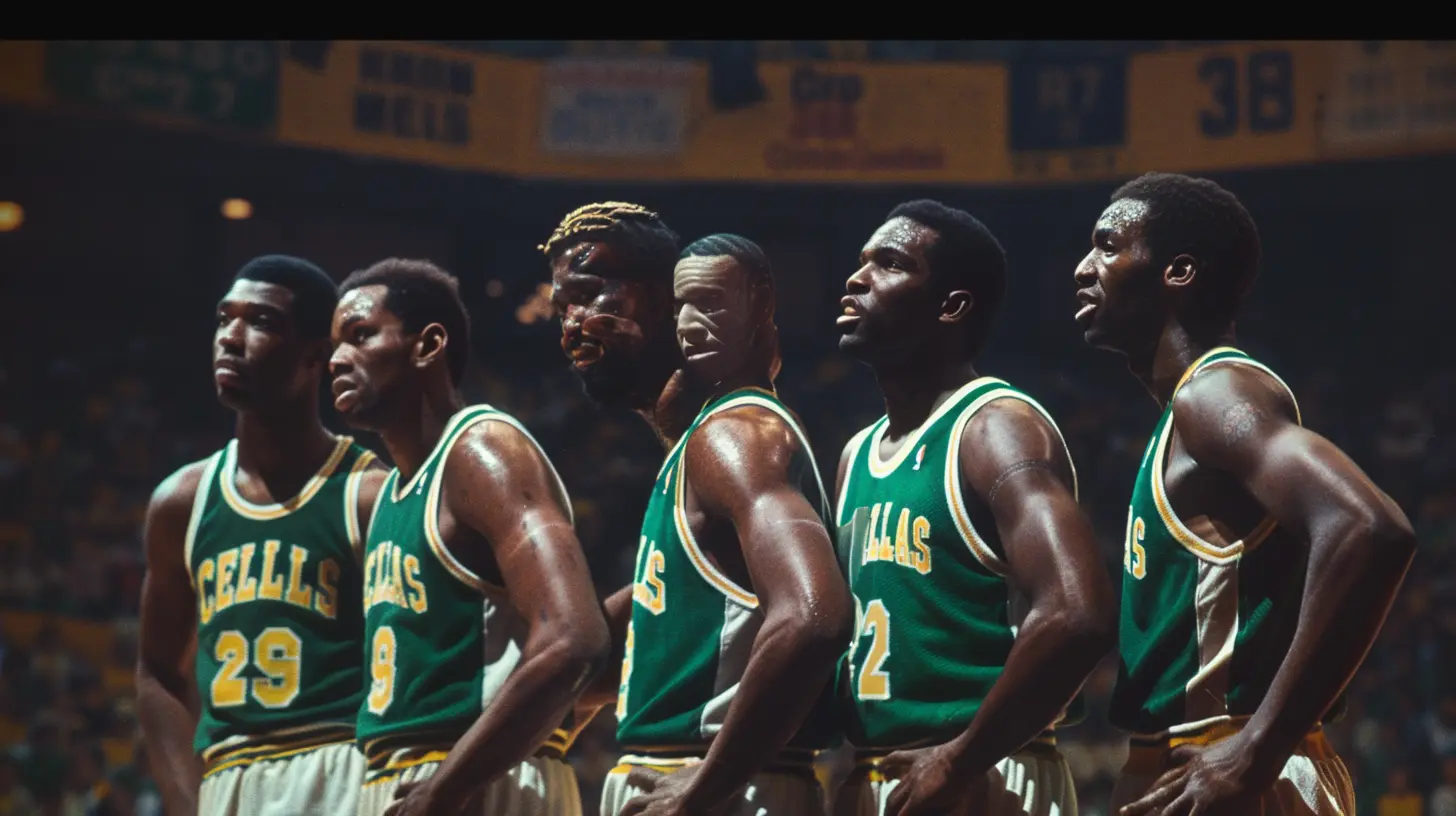How the Boston Celtics Built a Dynasty
27 June 2025
Let’s be real. When we talk about dynasties in the NBA, the Boston Celtics are always in the conversation — if not leading it. Whether you're a die-hard fan, a basketball junkie, or someone casually tuning in during the playoffs, you’ve probably heard stories about the Celtics' green and white army dominating the hardwood.
But how did it all begin? Was it just about great players? Or did something deeper fuel their rise to legendary status?
Grab your jersey, because we’re diving headfirst into how the Boston Celtics built a dynasty — step by step, game by game, and decade by decade.
The Origins: A Franchise Is Born
The Boston Celtics were founded in 1946, but let’s not pretend they were an overnight sensation. In fact, their early years were rocky. They needed more than just a logo and a few wins to turn heads. Back then, basketball was a growing sport, still fighting for mainstream attention, and Boston was looking for a way to stand out.Cue Red Auerbach.
Red Auerbach: The Mastermind Behind the Machine
If the Celtics dynasty were a movie, Red Auerbach would be the director, writer, and head of casting. Hired as head coach in 1950, Red didn’t walk in with a trophy — but he brought brains, boldness, and a cigar always ready for lighting up victory.One of his most legendary moves? Drafting Bill Russell in 1956.
Now, that might sound like just a smart pickup, but it was chess, not checkers. Auerbach traded for Russell because he didn’t just want scorers — he wanted winners. Russell was a game-changer on both ends of the floor, redefining what it meant to dominate with defense.
That decision would become the foundation of the Celtics' first dynasty.
The Bill Russell Era: 11 Championships in 13 Years
Hold up — read that again. Eleven rings in thirteen years.Think about how insane that is. Most franchises dream about just making the playoffs. Bill Russell and the Celtics normalized winning.
Under Russell’s leadership and Auerbach’s system, the Celtics weren’t just playing basketball — they were teaching clinics. Defense, hustle, selflessness — it was all there. They built a team identity that revolved around chemistry over ego, teamwork over stat sheets.
Add in Hall-of-Famers like Bob Cousy, John Havlicek, and Sam Jones, and you’ve got a squad that rewrote the definition of dominance.
Even after Red Auerbach stepped down as coach, he remained the general manager, pulling the strings behind the scenes. The culture he created didn’t vanish — it evolved.
The 70s: Transition Without Collapse
After Russell retired in 1969, the Celtics could’ve crumbled. Let’s face it — losing a player of his caliber usually sends a franchise spiraling. But not Boston.Led by new stars like Dave Cowens, Paul Silas, and Jo Jo White, with Tommy Heinsohn (a former Celtics legend) coaching, the Celtics won two more championships in the ‘70s (1974 and 1976). They weren’t as dominant as in the ‘60s, but they stayed in the mix — always competitive, always relevant.
How? Because of a strong organizational foundation. The team didn’t just rely on stars. They groomed future ones, drafted smart, and stayed consistent in their style of play.
The Bird Era: A Revival of Greatness
Enter Larry Legend.In 1978, the Celtics drafted Larry Bird, and wow — talk about a cultural reset. Bird didn’t just bring skills; he brought swagger and grit. The kind of guy who could trash-talk you and then drop a triple-double on your head.
Paired with Kevin McHale, Robert Parish, and later Dennis Johnson, this new Celtics core took the NBA by storm.
The 1980s Celtics were built on versatility and toughness. Bird could shoot, pass, and rebound. McHale’s post-game? Pure poetry. Parish was a rock in the paint. It was like watching a well-oiled machine — everyone played their role to perfection.
From 1981 to 1986, the Celtics bagged three more championships and were in the mix every year. And let’s not forget those legendary battles with the Lakers. Magic vs. Bird wasn’t just great basketball — it saved the league, period.
A Dip in the Road: The '90s and Early 2000s
After their '80s success, the Celtics hit a rough patch. Tragedy struck with the death of Len Bias (a phenom drafted in 1986) and later Reggie Lewis. Those losses weren’t just emotional blows — they derailed future championship hopes.The '90s became a quiet era for Boston. A few playoff appearances, lots of rebuilding, and not much else to write home about.
But again — no panic. The Celtics weren’t a one-hit wonder. They were patient, calculated, and always thinking two steps ahead.
Which brings us to…
The Big Three Reloaded: Pierce, Garnett, and Allen
By 2007, Boston was starving for a banner. The front office knew it, and GM Danny Ainge wasn’t playing games.He pulled off a masterclass by assembling a new Big Three: Paul Pierce (the loyal soldier), Kevin Garnett (the emotional anchor), and Ray Allen (the smooth sniper). Add young Rajon Rondo, and suddenly, the Celtics were dangerous again.
In 2008, all the pieces clicked. They played suffocating defense under the guidance of Coach Doc Rivers and embraced a "team-first" mentality.
They won the NBA title that season, beating their eternal rivals — the Lakers — in six games. The dynasty vibes were back.
Though injuries and age kept them from repeating, the Celtics remained contenders for several years, always threatening in the East.
The Brad Stevens Era: Rebooting with Youth
As the 2010s rolled in, the Celtics once again found themselves in rebuild mode. But this time, they had a plan.Hiring Brad Stevens in 2013 brought a fresh mindset. Stevens was a college coaching sensation, and while the Celtics didn't have a true superstar at the time, they had assets — lots of them.
Danny Ainge worked the trade game like a poker master, flipping veterans for picks, drafting young talent like Jaylen Brown and Jayson Tatum, and creating cap space for future moves.
Instead of waiting a decade to compete, Boston was back in the Eastern Conference Finals within a few years. Tatum? A pure scorer. Brown? A two-way beast.
Building with Patience in a Microwave League
In today’s NBA, it’s all about fast results. Teams build super squads in one offseason and blow it up by the next. But the Celtics chose the long game.They developed their young players the right way. Taught them to play defense, emphasized team ball, and used every playoff disappointment as fuel.
They didn’t panic or overpay in free agency. They trusted their culture — the same culture Auerbach and Russell built decades ago.
The Present and Future: The Dynasty Continues?
Right now, the Celtics look scary. They've reached the postseason almost every year since 2015 and have a legit shot at winning it all in the near future.Coaching? Solid. Roster? Deep. Mentality? Championship or bust.
Tatum and Brown are in their prime, and with smart front office decisions, the Celtics are positioned for sustained success.
Whether or not they win a bunch of rings in the next few years, one thing’s clear — Boston knows how to build a winning culture that lasts.
What Makes the Celtics a True Dynasty?
Let’s wrap it up with the million-dollar question — what makes the Boston Celtics a dynasty?It’s not just about the rings (although 17 of them do speak pretty loud). It’s about consistency. Culture. Mental toughness. The ability to adapt with the times while staying true to who they are.
They don't just draft talent; they develop it.
They don’t just win games; they build legacies.
From Red Auerbach to Brad Stevens. From Bill Russell to Jayson Tatum. The Celtics don’t rebuild — they reload.
So yeah, when people say the Celtics are a dynasty, they’re not just hyping history. They’re pointing to a blueprint that’s still unfolding.
all images in this post were generated using AI tools
Category:
Sports HistoryAuthor:

Nelson Bryant
Discussion
rate this article
1 comments
Kristen Graham
The Boston Celtics' dynasty was no accident; it combined strategic acquisitions, remarkable player development, and a strong winning culture. Their focus on teamwork and resilience set them apart, making them a model for future franchises in the NBA.
July 3, 2025 at 3:47 AM

Nelson Bryant
Thank you! Your insights on the Celtics' strategic approach and emphasis on teamwork perfectly capture the essence of their dynasty.


